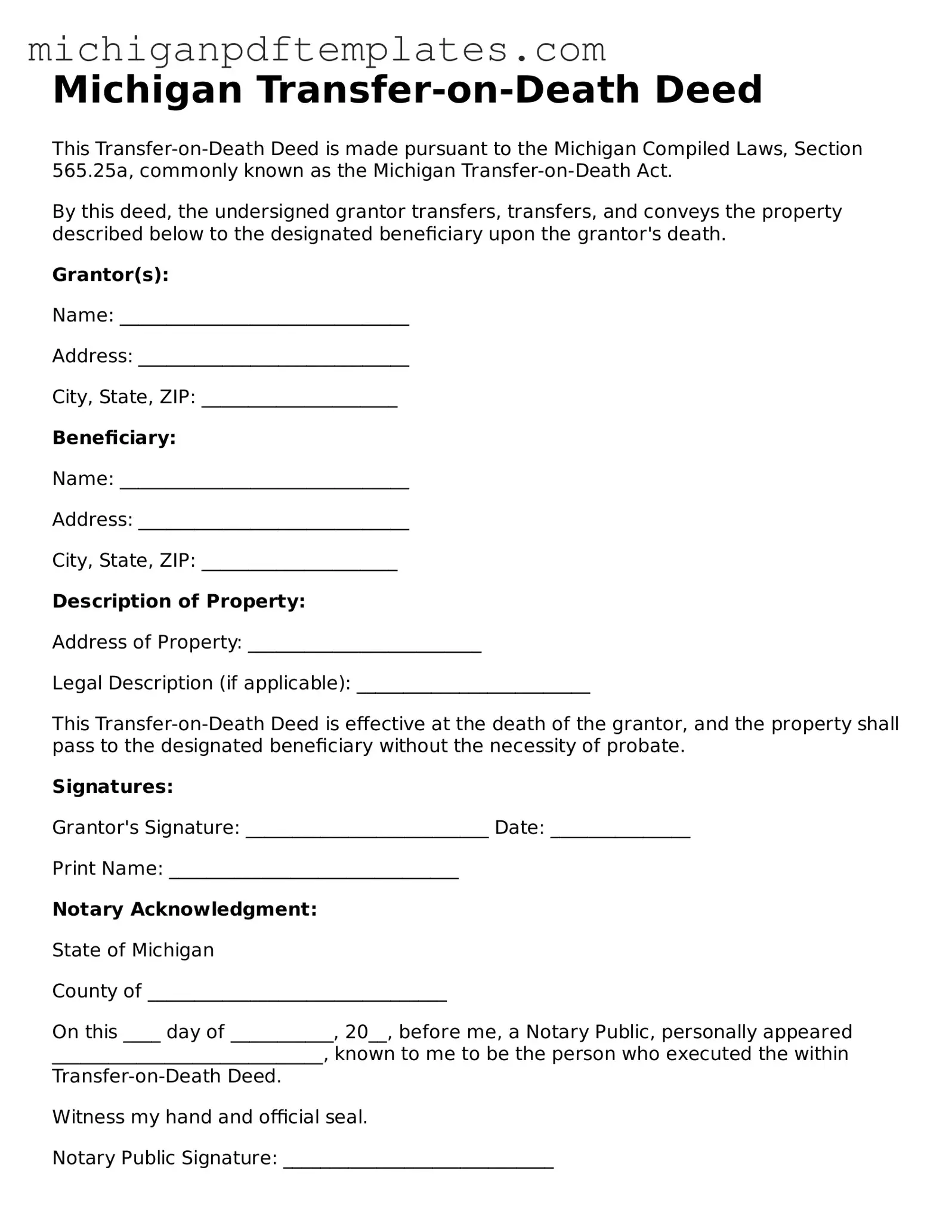In the realm of estate planning, the Michigan Transfer-on-Death Deed (TODD) form emerges as a valuable tool for property owners seeking to simplify the transfer of their real estate upon death. This form allows individuals to designate one or more beneficiaries who will automatically inherit the property, bypassing the often lengthy and costly probate process. By completing a TODD, property owners can retain full control over their property during their lifetime, while ensuring a seamless transition to their chosen heirs after passing. Importantly, the form must be executed with specific legal requirements, including proper notarization and recording with the local register of deeds, to ensure its validity. Understanding the nuances of the TODD form can empower individuals to make informed decisions about their estate, providing peace of mind that their property will be managed according to their wishes. This article will explore the intricacies of the Michigan Transfer-on-Death Deed, including its benefits, the process for creating one, and potential pitfalls to avoid, ultimately guiding readers toward effective estate planning strategies.
